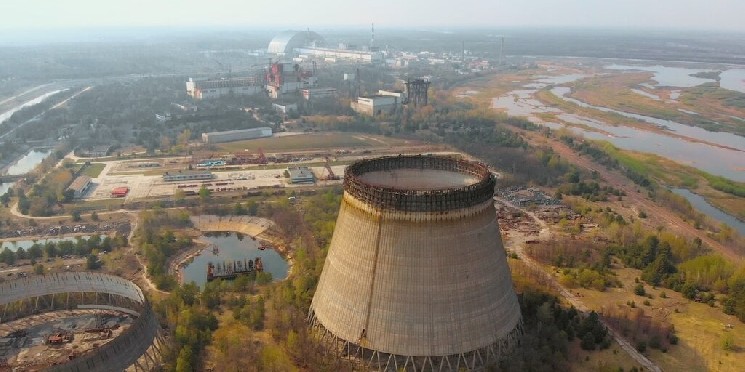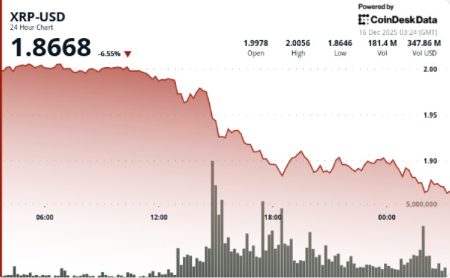Chernobyl’s Canine Mystery: How Dogs Survive in a Radioactive Wasteland
The Unexpected Blue Dogs That Sparked Scientific Interest
The recent viral images of stray dogs with startlingly bright blue fur near an abandoned chemical plant in Russia have inadvertently redirected global attention to a more scientifically significant canine population—the remarkable dogs that have survived for generations within the Chernobyl Exclusion Zone. According to caretakers working in the region, these blue-tinged animals had appeared completely normal just a week before their unusual transformation was documented. A social media post from the Dogs of Chernobyl organization noted with evident concern: “While catching dogs for sterilization we came across three that were completely blue. We’re not sure exactly what’s going on.” Though the azure coloration is believed to stem from chemical exposure unrelated to radiation, this strange occurrence has highlighted something far more significant: a decades-long natural experiment involving hundreds of semi-feral dogs surviving in one of the most radioactively contaminated environments on Earth—the aftermath landscape of the 1986 Chernobyl nuclear disaster.
The descendants of pets abandoned during the hasty evacuation of over 120,000 residents following the catastrophic reactor explosion have adapted to life in this seemingly inhospitable environment for more than 35 years. These animals represent something unprecedented in scientific studies—a population of complex mammals living under chronic radiation exposure across multiple generations. The blue dogs may have captured internet attention through their bizarre appearance, but for researchers, the normal-looking Chernobyl canines hold far more significant scientific secrets. These animals exist in a landscape where ambient radiation levels are known to damage DNA and disrupt cellular functions in ways typically considered devastating to mammalian health, yet somehow, they persist.
Genetic Confirmation: A Distinct Population Emerges
In a groundbreaking 2023 study published in the prestigious journal Science Advances, researchers provided the first definitive evidence that Chernobyl’s canine inhabitants are not merely stray dogs that wandered into the zone. Through comprehensive genetic analysis, scientists confirmed that these animals constitute a genetically distinct population, isolated and divergent from other domestic dog populations worldwide. This discovery represents a crucial first step in understanding the broader question of how complex mammals might adapt—or fail to adapt—to persistent radiation exposure across generations. The research team, led by scientists from the University of South Carolina who have dedicated decades to studying the zone’s unique ecosystem, sequenced the genomes of more than 300 dogs living in and around the former power plant facilities.
Their work revealed a detailed genetic portrait of a population that has been largely inbred for approximately 15 generations, developing in isolation under extraordinary environmental pressures. The genetic mapping confirmed what many had suspected but couldn’t previously prove: these are not ordinary strays but the products of a multi-generational experiment in survival under extreme conditions. This distinction matters tremendously for the validity of any conclusions drawn about radiation adaptation, as researchers needed to establish that these dogs had indeed been exposed to radiation across their entire lineage. The confirmation of their genetic uniqueness opens the door to more specific investigations into whether their DNA shows signs of adaptive changes in response to their radioactive environment.
The Scientific Mystery: Adaptation or Coincidence?
While the genetic uniqueness of Chernobyl’s dogs is now established fact, the reasons behind their distinct genetic profile remain largely speculative and form the core of ongoing research efforts. Scientists hypothesize that the intense selective pressure of living in a radioactive environment may have favored animals with specific genetic traits—potentially those related to more robust DNA repair mechanisms or enhanced resistance to radiation-induced cancers. This selective pressure could theoretically drive rapid evolutionary changes, as animals without protective genetic features would be less likely to reproduce successfully. However, the researchers have been careful to avoid premature conclusions about radiation resistance.
The 2023 study did not identify any definitive “radiation resistance gene” or simple genetic explanation for these dogs’ survival. In scientific terms, the team has not yet proven that the dogs have evolved beneficial adaptations specific to radiation exposure. Alternative explanations must be considered: the genetic differences observed could simply result from isolation and inbreeding within a small founding population—a genetic bottleneck effect rather than adaptive evolution. It’s equally possible that the dogs’ health remains significantly compromised in ways not immediately apparent to observers. Notably, researchers have documented that these animals typically experience considerably shorter lifespans than domestic dogs living in non-contaminated environments, suggesting that while they may survive, they certainly aren’t thriving by conventional standards.
Beyond Dogs: Human Health Applications and Space Exploration
The implications of this research extend far beyond understanding canine biology or satisfying scientific curiosity about radiation effects. The potential applications for human health and future space exploration make this research particularly valuable. If scientists can identify specific genetic mechanisms that allow these dogs to better cope with the DNA-damaging effects of chronic radiation exposure, this knowledge could revolutionize several fields of medicine and space science. For instance, such findings might lead to the development of new therapies to protect cancer patients’ healthy cells during radiation treatment, potentially reducing side effects while maintaining therapeutic effectiveness.
Similarly, the research holds promise for addressing one of the most significant challenges in long-duration spaceflight: protecting astronauts from cosmic radiation. As space agencies worldwide plan missions to Mars and beyond, radiation exposure remains one of the most serious health risks facing future explorers. Understanding natural radiation resistance mechanisms could inform the development of better protective protocols, medications, or even genetic interventions to safeguard humans during extended journeys beyond Earth’s protective magnetosphere. The dogs of Chernobyl, in this sense, represent not just an ecological curiosity but a potential key to unlocking solutions for some of humanity’s most pressing health and exploration challenges.
Living Laboratories: The Ethical Dimensions of Studying Chernobyl’s Ecosystem
The study of Chernobyl’s dogs raises important ethical considerations that researchers must navigate carefully. These animals exist in a unique gray area—they are neither fully wild nor domesticated, and they live in an environment contaminated through human technological failure. Scientists studying these populations must balance the potential knowledge benefits against concerns about animal welfare. Current research protocols emphasize non-invasive methods whenever possible, with initiatives like the Dogs of Chernobyl program providing veterinary care, including vaccination and sterilization, alongside their research activities. This approach represents an attempt to responsibly study these animals while acknowledging a human ethical obligation to their wellbeing.
The Chernobyl Exclusion Zone itself has become what scientists sometimes refer to as a “living laboratory”—an unintended experiment in how ecosystems respond to a major anthropogenic disaster. Beyond dogs, researchers have documented surprising biodiversity in the region, with populations of wolves, bears, bison, and numerous other species appearing to thrive in the absence of human habitation, despite the radiation. This phenomenon raises profound questions about the relative impacts of human presence versus radiation on wildlife populations. Some ecologists suggest that the removal of human activity from the landscape has provided benefits that, at a population level, may outweigh the negative effects of radiation exposure on individual animals. These observations force us to reconsider our understanding of ecological resilience and the complex interplay between different types of environmental pressures.
The Ongoing Quest for Answers in a Radioactive Landscape
For now, the dogs of Chernobyl remain both an enigma and a window into potential biological adaptations to extreme environments. The viral interest in their blue-coated counterparts has served primarily to underscore the public’s continued fascination with the lingering effects of the 1986 disaster. Yet for scientists, the true significance lies not in unusual coloration but in the genetic code that may eventually reveal secrets of survival in one of the world’s most contaminated environments. As research continues, each generation of these dogs provides new data points in this unplanned experiment.
The story of Chernobyl’s dogs reminds us that sometimes scientific insights come from the most unexpected places—not from carefully designed laboratory experiments but from observing how life adapts to circumstances humans never intended to create. As climate change and other anthropogenic pressures transform more of our planet’s environments, understanding how different species adapt—or fail to adapt—to novel stressors becomes increasingly relevant. In this context, the dogs of Chernobyl represent not just a scientific curiosity but a potential preview of evolutionary responses to human-altered environments worldwide. Their continued study offers a unique opportunity to observe, in real-time, the biological processes that might allow complex mammals to persist in the face of significant environmental challenges—knowledge that may prove invaluable as humanity navigates an increasingly uncertain ecological future.















